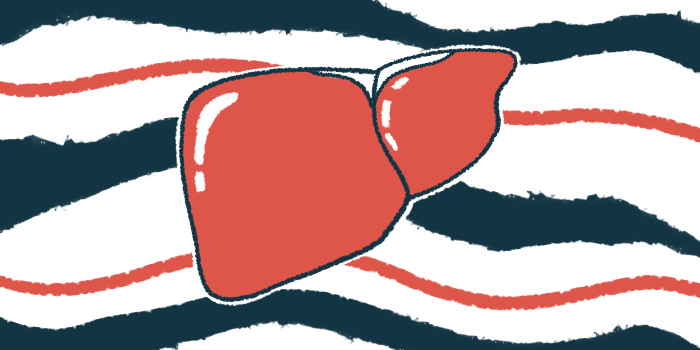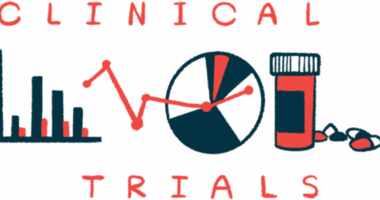Stem cell therapy may boost liver health in infants with biliary atresia
Study: Treatment followed standard Kasai surgery to restore bile flow

Therapy using stem cells derived from donor umbilical cords may help improve outcomes in infants with biliary atresia who have undergone standard Kasai surgery, a small study indicates. Kasai surgery is intended to restore the flow of bile, a digestive fluid, in the body.
One year after the stem cell treatment, blood levels of liver damage markers were significantly lower when compared with those of children of the same age who had not received the additional treatment. Survival rates were also higher in the stem cell therapy group after about three years.
While these findings support the use of stem cell therapy as an add-on to the Kasai surgery, researchers emphasized that larger studies are needed to confirm the therapy’s benefits in this patient population.
The study, “Outcomes of allogeneic umbilical cord mesenchymal stem cell infusion for liver cirrhosis due to biliary atresia after Kasai operation,” was published in the Journal of Pediatric Surgery.
Bile ducts pinched off or blocked in biliary atresia
Bile is a digestive fluid that helps the body break down and absorb fats and fat-soluble vitamins. It’s produced by the liver and transported to the intestines through a series of tubes called bile ducts.
Biliary atresia is a congenital disorder where the bile ducts are pinched off or blocked. As a result, bile cannot flow properly, and it builds up to toxic levels in the liver, which causes liver damage.
The Kasai procedure is a surgical operation that aims to create a new channel for bile to flow from the liver to the intestines. This surgery is the first-line treatment for biliary atresia and has been proven to improve outcomes.
Still, over the long run, children will often develop worsened liver disease, and a liver transplant may become the only therapeutic option.
Mesenchymal stem cells, or MSCs, are stem cells that can generate a variety of other cell types and produce a range of signaling molecules that can help modulate inflammation and tissue repair.
In recent years, scientists have begun exploring whether treatment with MSCs may help improve outcomes in a wide range of conditions.
Babies given stem cell therapy had better measures of liver function after a year
In this study, scientists in Vietnam explored the use of MSCs derived from donor umbilical cords (UC-MSCs) as a potential add-on therapy of Kasai surgery in infants with biliary atresia.
The study included 32 babies with biliary atresia who underwent the Kasai procedure at a median of about 2.5 months of age. At the time of the Kasai procedure, most babies had substantial liver scarring, known as fibrosis, including about 30% with cirrhosis, or irreversible fibrosis that can interfere with liver function.
At a mean age of about 9 months, half of these babies received the UC-MSC therapy. At this time, babies in both groups had similar liver function and scores on the Pediatric End-Stage Liver Disease (PELD), a standard measure used to track the severity of liver damage in children. Both groups were then followed for a mean of up to about three years.
Those in the stem cell therapy group received an infusion of UC-MSCs into the hepatic artery, a large blood vessel in the liver. The stem cell therapy was overall tolerated well, with no serious side effects reported.
“The procedures were successfully completed without any complications during or after the intervention in all patients,” the researchers wrote.
Our results demonstrate that the delivery of UC-MSCs via the hepatic artery is both feasible and safe for infants.
Babies given the UC-MSC treatment after Kasai tended to have better outcomes in measures of liver function after one year, including significantly reduced blood levels of the liver damage markers alkaline phosphatase and bilirubin.
The UC-MSC group also had significantly larger reductions in the PELD score relative to the control group.
“PELD scores remained stable or decreased in 11 out of 16 patients in the intervention group, compared to eight out of 16 patients in the control group,” the researchers wrote. “Lower PELD scores in biliary atresia correlate with delayed progression to liver failure and potentially postpone the need for liver transplantation.”
As of the latest follow-up, all 16 children given UC-MSC therapy were still alive, while two of the children who did not receive stem cell therapy had died due to liver failure.
“To the best of our knowledge, this is the first study to use UC-MSCs delivered via the hepatic artery in children with liver cirrhosis following a Kasai operation,” the researchers wrote. “Our results demonstrate that the delivery of UC-MSCs via the hepatic artery is both feasible and safe for infants.”
The researchers stressed, however, that this was a small, short-term study, so further research will be needed to validate the results, explore optimal protocols, and determine exactly how UC-MSCs may affect liver biology in biliary atresia.








